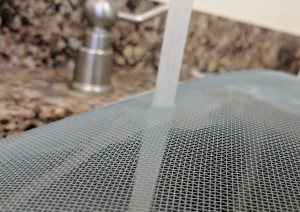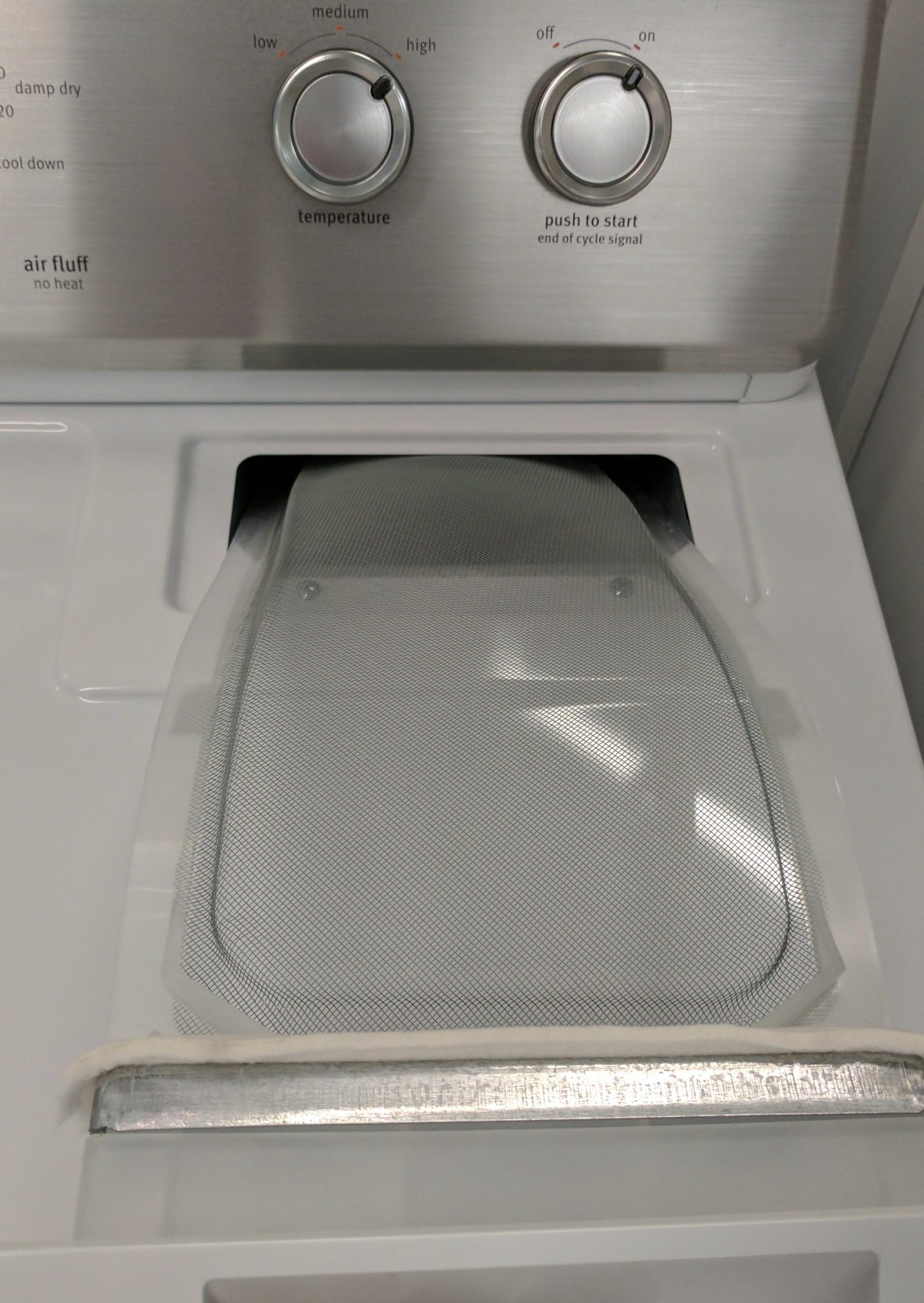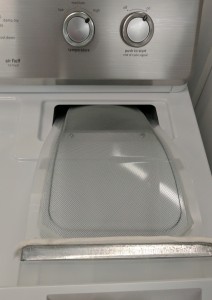Many of us have heard that failing to remove the lint from your dryer’s lint trap poses a fire hazard. Hopefully, between each load of freshly dried laundry, you’re pulling out the little mesh screen and peeling the thin layer of lint off the filter. Making this a regular practice not only helps keep your home safe, but it also helps your dryer continue to perform efficiently.
What far fewer people realize is that your lint trap needs a bit more care than simply removing the collected lint between cycles. Over time, fabric softener sheets can create a film of residue that can block airflow, forcing your dryer to use more energy to do its job. This kind of stress on the heating unit can reduce the life of your dryer. If you have a lint filter that’s fully removable, there are a few steps you can take to give it a deeper cleaning.
Every 7-10 weeks, use the following method to give your lint trap a little extra attention to ensure your dryer is working at its full potential!
What you need:
-vacuum cleaner with a hose attachment
-empty paper towel roll
-masking tape
-scrubbing brush (i.e. brush attachment on vacuum, old toothbrush, dish scrubber, etc.)
-dish soap
-hot water in a container large enough to fit the lint trap
-
Remove the lint from the lint trap. Slide the filter from the slot, and remove and discard any normal lint build-up like usual. This is generally very easy to do by hand.
-
Soak the lint trap. Fill the container with hot water and some dish soap, and agitate until sudsy. Place the filter in the container and let it soak for about 15 minutes.
-
Gently scrub the residue away. Using the brush, give the filter a gentle scrub to get the last of the residue from between the mesh.
-
Rinse. Thoroughly rinse the trap with clean water. The water should run uninhibited through the mesh. If there seems to be any delay in the water flow through the mesh, repeat steps 2 and 3 to give additional cleaning.
-
Dry thoroughly. Allow the lint filter to dry completely before putting it back into your dryer. Putting a wet lint filter in your machine could cause major problems.
-
Prepare your vacuum for the vent. Attach the paper towel roll to the end of the hose attachment on your vacuum. Use the masking tape to make a nice seal. Using the paper towel roll gives you an extendable and bendable hose to get in tight spaces.
-
Vacuum the vent. Bending and flattening as needed, feed your new hose attachment into the vent slit that the lint filter goes into. Move it around and do your best to get as much residual lint and dust out of the vent as possible.
-
Return your clean, dry lint filter to the lint trap. You did it! Just like the water, air will now flow much easier and more effectively through your filter.




No responses yet